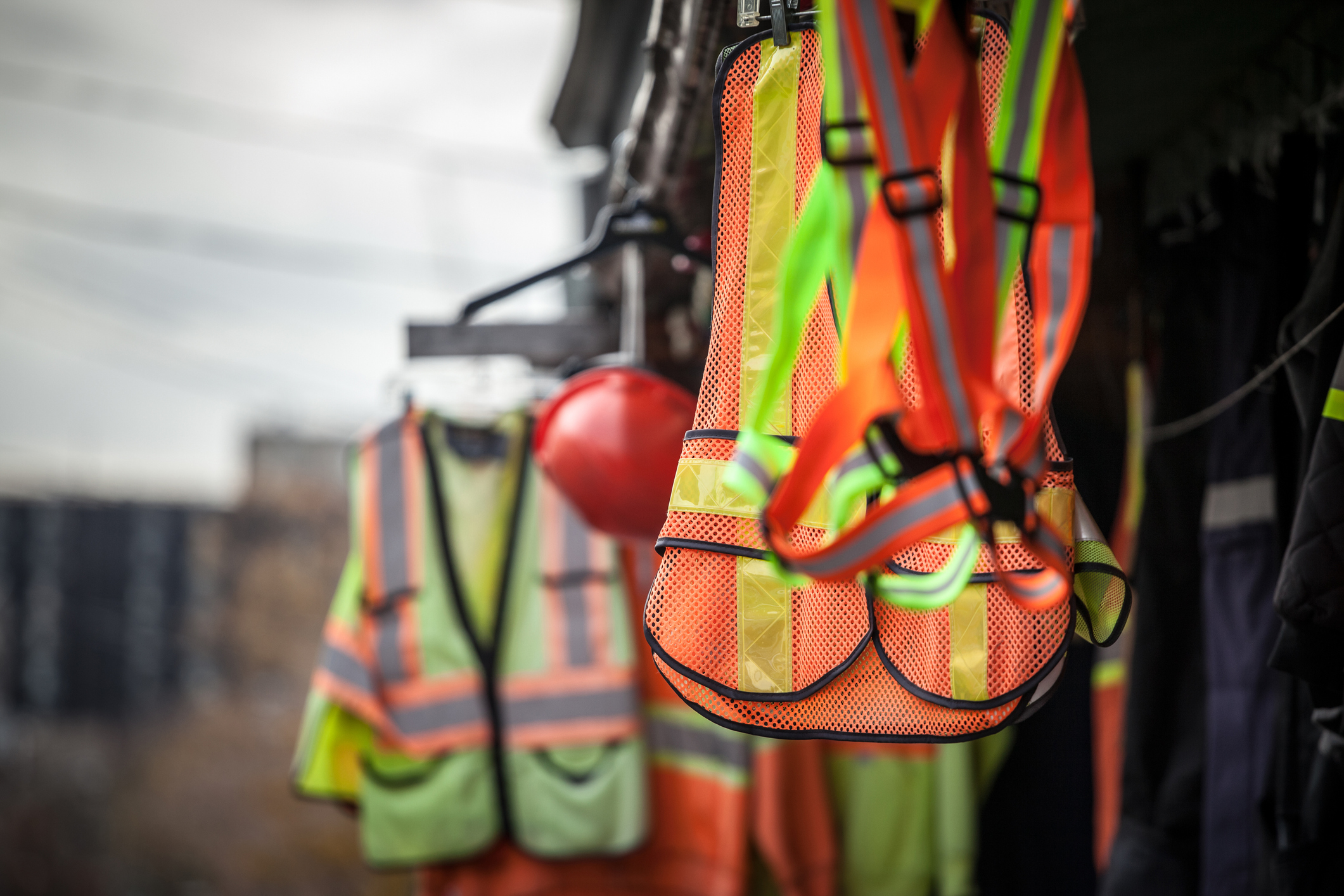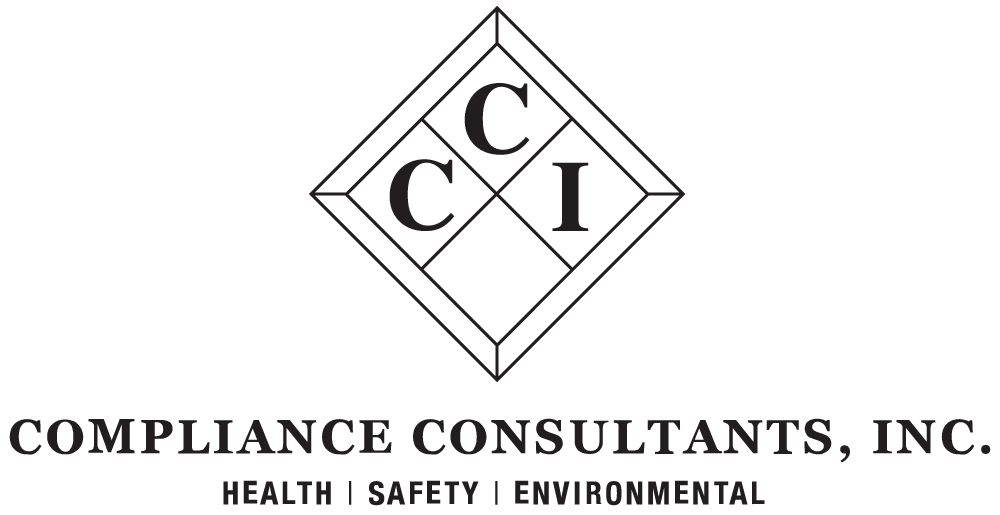
Personal Protective Equipment (PPE) is Vital- Shortcuts Can Be Costly!
The Importance of Personal Protective Equipment
Every year, millions of injuries occur on jobsites throughout the country because of improperly used or lack of personal protective equipment (PPE). Many of these injuries could have been avoided had the workers been wearing the appropriate personal protective equipment for the job.
Money spent on workplace injuries and worker’s comp costs, plus lost time and decreased productivity should be enough to convince even the most reluctant employers to invest in a Personal Protective Equipment program. Don’t let excuses like: “I don’t have the money to spend on PPE” or “I have a program, but my employees won’t wear PPE” get in the way of keeping your workers safe.
Proper Personal Protective Equipment will minimize the
chances of your employees being injured on the job,
plus it will save you money and project delays in the long term!
The OSHA General Industry PPE standard (29 CFR 1910.9) states “The employer must provide Personal Protective Equipment to each employee required to use the PPE, and each failure to provide Personal Protective Equipment to an employee may be considered a separate violation.” The same applies for proper training in PPE use.
This means that if your employees are not provided with and properly trained in how to use appropriate personal protective equipment for the job, you could be assessed a per-employee penalty. These citations could quickly add up to as much as six figures worth of fines, so it makes financial sense to implement a PPE program and have management practices in place to ensure workers comply!
Let’s take a look at the PPE rule and what it means for employers.
Employer Payment of Personal Protective Equipment
So what do employers have to pay for when it comes to ?
The employer is required to provide and pay for any equipment that is required for employees to complete their jobs in a safe manner. If there are environmental, chemical, radiological, mechanical or process hazards that could cause injury or impairment through absorption, inhalation or physical contact, the proper PPE should be provided and used.
Basically, this means that the employer is required to pay for and provide employees with any PPE that would be required in order to comply with OSHA standards . . . with a few exceptions.
Here’s What Employers do NOT have to pay for:
- Workers’ everyday clothing such as long-sleeved shirts, pants, normal work boots, etc.
- Clothing used for protection from weather, such as parkas, coats, jackets, gloves, etc. (However gloves that are used to protect an employee from workplace hazards would be considered PPE and are required to be paid for by the employer.)
- PPE that was lost or intentionally damaged by the employee
- Uniforms, caps, aprons, coveralls or other clothing worn to identify an employee or are worn solely to keep the employee clean
Make Time for Compliance with Personal Protective Equipment Rules
The first step in putting together a PPE Program is a Workplace Hazard Assessment. This will help you identify what hazards are present in the workplace and thus help you determine what PPE should be provided to keep your employees safe.
Further, PPE by itself should not be your only line of defense against injuries. PPE should be used in conjunction with guards, engineering controls and other safe work practices to ensure your employees are not injured. An integral part of any PPE program is training. Don’t assume employees know how and when to use their PPE.
A good training program should educate employees in the following areas:
- When PPE is necessary
- What PPE is necessary
- How to put on, take off, adjust and wear PPE
- The limitations of the PPE
- Care, maintenance, useful life and disposal of PPE
After completing the PPE training program, employees should be able to demonstrate their understanding of proper PPE use. Retrain employees if they lack understanding or when changes happen in the work environment that require new PPE procedures.
There are many aspects to managing and maintaining PPE for your employees.
OSHA is a great resource and has developed a Fact Sheet that it very helpful in providing specific information for your needs
Ongoing PPE Maintenance is Crucial
Maintenance of PPE is another way to make sure you remain in compliance with OSHA standards. It’s not enough to put a PPE program in place and then forget about it. Make sure your PPE program stays up to date by reevaluating the workplace hazard assessment regularly, especially after changing equipment or processes and after accidents.
A new piece of machinery or a new manufacturing process may require new or different PPE. Review your program regularly and make changes whenever it is necessary. Train new employees immediately and retrain employees who are not following the program properly.
Not only do you need to look at the PPE program regularly but you also need to maintain the PPE itself. Sure, an employee who wears a hard hat is protected from falling objects, but what if that hard hat has a crack in it? Inspect all PPE regularly and anything that is damaged should not be used until it has been repaired and deemed usable again, if that is even possible. Proper care and cleaning of PPE is also important. Plus, when you take better care of your PPE, it will last longer, thus saving you money.
A Quick Look at Types of Personal Protective Equipment
| Types of PPE | When It Should Be Used | Examples |
| Eye and Face Protection | When employees are exposed to eye or face hazards from flying particles, molten metal, liquid chemicals, acids or caustic liquids, chemical gases or vapors, or potentially injurious light radiation. | Glasses, goggles, face shields |
| Respiratory Protection | When employees must breathe air that is contaminated with harmful dusts, fogs, fumes, mists, gases, smokes, sprays or vapors. | Dust Masks, Air-Purifying Respirators, Atmosphere-Supplying Respirators |
| Head Protection | Whenever there is a possibility for injury to the head due to falling objects and whenever employees are working near exposed electrical conductors that could contact the head. | Protective helmets, hardhats |
| Occupational Foot Protection | If there is a danger of foot injuries due to falling or rolling objects, objects that could pierce the sole of the shoe, and when employees’ feet are exposed to electrical hazards. | Metatarsal guards, steel-toe boots, compression-resistant boots, puncture-resistant boots, conductive or insulating boots |
| Hand Protection | When employees’ hands are exposed to hazards such as skin absorption of harmful substances, severe cuts or lacerations, abrasions, punctures, chemical or thermal burns, and harmful temperature extremes. | There isn’t a glove that will protect against all hazards so it is important that you check with the manufacturer to see that the glove you have selected will protect against the hazards present. |
The types, rules, training, and maintenance of PPE is complicated but it’s essential in helping to keep your workplace safe. Compliance Consultants, Inc. is here to help you navigate which equipment to invest in and how to train your team to use it properly.
Contact us to find out more.



